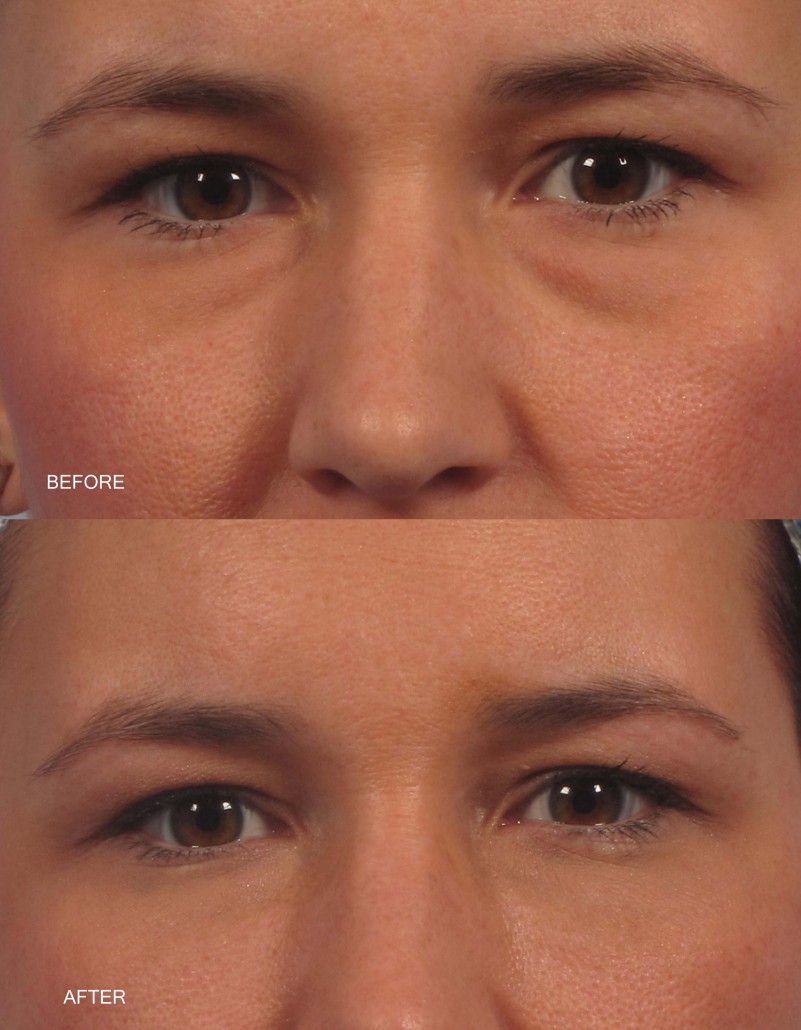What is under-eyelid hollowing?
The valley under the lower eyelid that creates shadows, pseudo-dark circles, and a sunken appearance.
How the tear trough and hollowing under the eyes is treated
Injectable fillers
The area that is deficient in volume may be reinflated with a filler injection. Hyaluronic acid is the most frequently used filler in the immediate under-eye area. It is a gel consisting of linked sugar molecules that are already naturally present in the body. Examples of hyaluronic acid fillers are Restylane, Perlane, and Juvederm. The filler is reversible and can be “melted” away with an injection of hyaluronidase, the enzyme that breaks down hyaluronic acid.
In the tear trough or under-eye hollows, fillers are usually injected deeply, on top of the bone. Deep injections minimize lumps and blue discoloration (Tyndall effect) that can occur with shallow filler injections under the eyes.
Techniques for administration of filler under the eyes include bolus injection (a large, single bead of filler is injected at one location and spread into place with massage), microdroplet injection (multiple small beads of filler injected), and threading (enlongated strips of filler are injected). A combination of these may be used at the same time.
Injectable hyaluronic acid fillers last for 6 – 12 months or longer.
Fat injections
Fat from another part of the body can be injected into the valleys under the eyes. Using your own tissue reduces issues related to foreign materials and can have significantly longer-lasting results than synthetic fillers.
Fat is collected from the abdomen, flanks, and or thighs using a mini-liposuction technique with tumescent anesthetic, a fluid containing medications that numb the area. The collected fat is typically processed to purify and concentrate the final product, either with filtration or a centrifuge. The harvested fat is injected into the under eye hollows using a delicate tube called a cannula. It is carefully deposited in very small amounts or droplets, to avoid lumps and visible irregularities.
Transferred fat generally lasts longer than hyaluronic fillers and may in fact be permanent.
Studies have reported a 50% – 90% fat graft survival rate. Fat transfer may be repeated and can be performed at the same time as other procedures. Bruising and swelling can last for 1-2 weeks (or longer) after fat transfer.
Lower blepharoplasty
A surgical lower eyelid lift can address the under eye hollows. An incision is made behind the eyelid through the conjunctiva or in front of the eyelid underneath the eyelashes. Excess or bulging lower eyelid fat, if present, is shifted or redraped from underneath the eye to the area of hollowing along the orbital rim. Stitches may be used to secure the ribbon-like fat in its new position. Fat redraping during blepharoplasty differs from injectable fat transfer in that the fat ribbons or pedicles maintain a blood supply from inside the orbit.
Lower blepharoplasty may also address loose or excess lower eyelid skin and muscle at the same time as fat repositioning.

